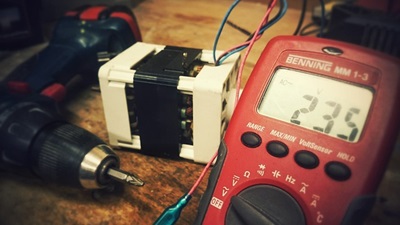
- Introduction
- Fundamentals of Transient Stability
- Causes of Transient Instability
- Components of a Stable Power System
- Analyzing Transient Stability
- Transient Stability Margin
- Improving Transient Stability
- Transient Stability Assessment Techniques
- Case Studies
- Impact of Renewable Energy on Transient Stability
- Advanced Techniques and Technologies
- Economic Considerations
- Regulations and Standards
- Future Trends in Transient Stability
- FAQs
Introduction
Transient stability is a critical aspect of power system operations, ensuring that the system can withstand and recover from disturbances such as faults or sudden load changes. Understanding and maintaining transient stability is essential for preventing widespread blackouts and ensuring a reliable supply of electricity.
Fundamentals of Transient Stability
Basics of Power System Stability
Power system stability refers to the ability of the system to return to a steady state after a disturbance. There are three main types of stability: rotor angle stability, frequency stability, and voltage stability. Transient stability specifically deals with the system’s response to large, short-term disturbances.
Types of Stability in Power Systems
- Rotor Angle Stability: Focuses on maintaining synchronism among generators.
- Frequency Stability: Ensures the system’s frequency remains within acceptable limits.
- Voltage Stability: Involves maintaining acceptable voltage levels across the system.
Causes of Transient Instability
Sudden Load Changes
Sudden increases or decreases in load can cause significant disturbances, challenging the system’s stability.
Faults in the System
Electrical faults, such as short circuits, can lead to severe instability if not quickly cleared.
Switching Operations
Switching operations, such as opening or closing circuit breakers, can introduce disturbances that impact transient stability.
Components of a Stable Power System
Generators
Generators must remain synchronized and operate within their capabilities to maintain system stability.
Transmission Lines
Transmission lines must handle power flows without excessive heating or voltage drops that could destabilize the system.
Load Centers
Load centers must be managed to prevent sudden, large changes in demand that could affect stability.
Analyzing Transient Stability
Methods of Analysis
- Time-Domain Simulation: Simulates the system’s response over time to disturbances.
- Direct Methods: Use mathematical models to assess stability without time-domain simulations.
- Hybrid Approaches: Combine elements of both time-domain and direct methods.
Simulation Tools
Software tools like PSS/E, PSCAD, and MATLAB are commonly used for transient stability analysis.
Key Metrics
Metrics such as critical clearing time, rotor angle deviation, and system frequency are vital for assessing stability.
Transient Stability Margin
Definition and Importance
The transient stability margin is the difference between the system’s operating point and the point at which instability occurs. A larger margin indicates a more stable system.
Calculating Stability Margin
Stability margin is calculated using methods such as energy function analysis and eigenvalue analysis.
Improving Transient Stability
System Design Considerations
Designing systems with robust interconnections and sufficient generation capacity can enhance stability.
Control Strategies
Implementing advanced control strategies, such as automatic generation control (AGC) and flexible AC transmission systems (FACTS), can improve stability.
Protective Relays
Protective relays quickly isolate faults, preventing them from affecting the entire system and improving overall stability.
Transient Stability Assessment Techniques
Time-Domain Simulation
This technique involves detailed simulation of the power system’s dynamic response to disturbances, providing insights into potential stability issues.
Direct Methods
Direct methods, such as Lyapunov’s direct method, provide a more analytical approach to assessing stability without extensive simulations.
Hybrid Approaches
Combining time-domain and direct methods offers a comprehensive assessment of transient stability, leveraging the strengths of both approaches.
Case Studies
Real-World Examples of Transient Instability
Analyzing past incidents of transient instability can provide valuable lessons for improving future system stability.
Lessons Learned
Key takeaways from real-world cases include the importance of rapid fault clearance, robust system design, and effective control strategies.
Impact of Renewable Energy on Transient Stability
Integration Challenges
Integrating renewable energy sources, such as wind and solar, introduces variability and uncertainty, posing challenges for transient stability.
Solutions and Adaptations
Solutions include grid-scale energy storage, advanced forecasting techniques, and grid-friendly inverter technologies.
Advanced Techniques and Technologies
FACTS Devices
Flexible AC transmission systems (FACTS) devices, such as static VAR compensators (SVC) and unified power flow controllers (UPFC), enhance stability by controlling power flows and voltage levels.
HVDC Transmission
High-voltage direct current (HVDC) transmission offers efficient long-distance power transfer with improved stability characteristics.
Smart Grid Technologies
Smart grid technologies, including advanced sensors, communication systems, and automation, enhance monitoring and control, improving transient stability.
Economic Considerations
Cost of Stability Enhancements
Investing in stability enhancements, such as advanced control systems and infrastructure upgrades, involves significant costs but is essential for preventing costly outages.
Economic Benefits
Improved transient stability leads to fewer blackouts, enhanced system reliability, and ultimately economic savings from avoided disruptions.
Regulations and Standards
International Standards
Standards from organizations like the IEEE, IEC, and NERC provide guidelines for ensuring transient stability in power systems.
Compliance Requirements
Compliance with these standards ensures that systems are designed and operated to maintain stability and reliability.
Future Trends in Transient Stability
Emerging Technologies
Emerging technologies, such as advanced grid-scale storage and real-time stability monitoring systems, are shaping the future of transient stability.
Research Directions
Ongoing research focuses on developing new methods for stability analysis, integrating renewable energy, and improving control strategies.
FAQs
- What is transient stability in power systems?
- Transient stability refers to the power system’s ability to maintain synchronism and recover after a large, short-term disturbance.
- Why is transient stability important?
- It prevents blackouts and ensures a reliable supply of electricity by maintaining system integrity after disturbances.
- How can transient stability be improved?
- Through robust system design, advanced control strategies, rapid fault clearance, and integrating modern technologies like FACTS and HVDC.
- What role do renewable energy sources play in transient stability?
- Renewable energy sources introduce variability and uncertainty, posing challenges but also opportunities for enhancing stability through innovative solutions.
- What are the economic benefits of maintaining transient stability?
- Maintaining transient stability reduces the risk of costly outages, improves system reliability, and leads to long-term economic savings.